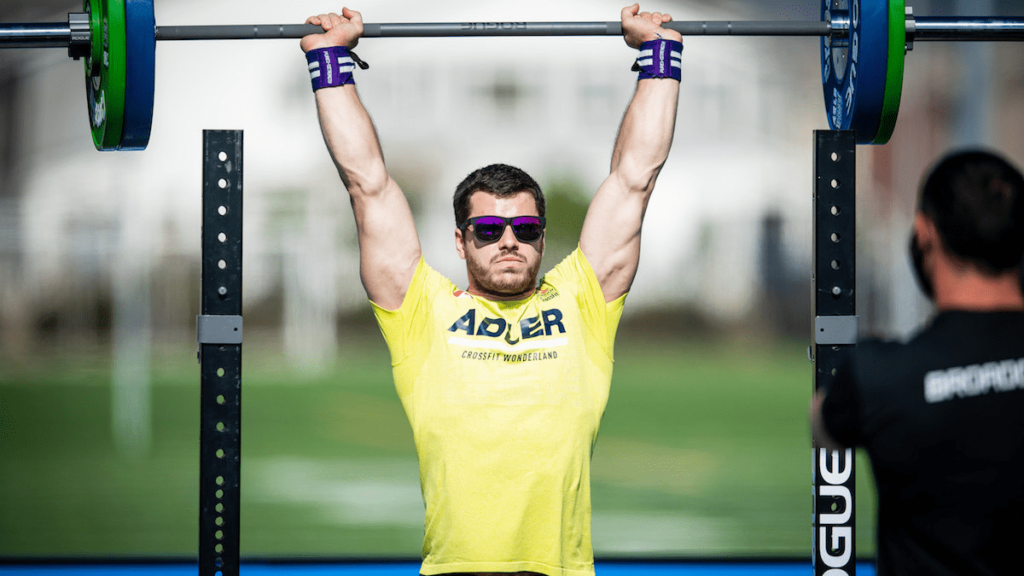Building a strong and muscular chest and arms is a common goal for many young men starting their fitness journey. Achieving these goals quickly and effectively requires a strategic approach grounded in science. This article explores five scientifically-backed methods to accelerate muscle growth in the chest and arms. Each section delves into specific techniques and exercises, supported by research studies, to provide a comprehensive guide for bulking up faster.
Progressive Overload
 Source: Domagoj Bregant on Pexels
Source: Domagoj Bregant on PexelsUnderstanding Progressive Overload
Progressive overload is a fundamental principle in strength training that involves gradually increasing the stress placed on the muscles during exercise. This concept is critical for continuous muscle growth, as it forces the muscles to adapt and grow stronger over time. The process can be achieved through various means, such as increasing the weight lifted, the number of repetitions, or the frequency of workouts.
Implementing Progressive Overload
To effectively apply progressive overload, start by establishing your baseline for each exercise. This could be the maximum weight you can lift for a certain number of repetitions (e.g., 8-12 reps). Each week, aim to either increase the weight by a small increment (e.g., 2-5%), add an additional repetition, or improve your technique and form.
For example, if you’re performing bench presses with 60 kg for 10 reps, the following week, you might increase the weight to 62 kg while maintaining the same rep range. Alternatively, you could aim for 12 reps with 60 kg.
Scientific Support
Research supports the efficacy of progressive overload in promoting muscle hypertrophy. A study by Schoenfeld et al. (2016) found that progressive overload is a crucial factor in increasing muscle size and strength, emphasising the importance of gradually increasing training intensity to maximise gains .
Compound Exercises

The Power of Compound Movements
Compound exercises are multi-joint movements that engage multiple muscle groups simultaneously. These exercises are highly effective for building muscle mass because they allow you to lift heavier weights and stimulate a greater overall muscle response compared to isolation exercises.
Key Compound Exercises for Chest and Arms
- Bench Press: Targets the chest, shoulders, and triceps.
- Push-Ups: A bodyweight exercise that engages the chest, triceps, and shoulders.
- Dips: Primarily work the triceps but also engage the chest and shoulders.
- Pull-Ups: Target the back and biceps, indirectly working the chest and arms.
Incorporating these compound exercises into your routine can significantly enhance muscle growth. Aim to perform these movements at least twice a week, ensuring proper form and technique to prevent injury and maximise effectiveness.
Scientific Support
A study by Gentil et al. (2017) demonstrated that compound exercises are more effective for muscle hypertrophy compared to isolation exercises due to the higher load and increased muscle fibre recruitment . Additionally, compound movements have been shown to boost anabolic hormone levels, such as testosterone and growth hormone, which further aids muscle growth (Ahtiainen et al., 2003) .
Optimal Nutrition
 Source: Ancuta Barna on Pexels
Source: Ancuta Barna on PexelsThe Role of Protein
Protein is essential for muscle repair and growth. To bulk up effectively, young men should aim to consume 1.6-2.2 grams of protein per kilogram of body weight daily. High-quality protein sources include lean meats, poultry, fish, eggs, dairy products, legumes, and protein supplements.
Caloric Surplus
To gain muscle mass, it’s necessary to consume more calories than your body burns. This caloric surplus provides the energy needed for intense workouts and muscle growth. Aiming for a daily surplus of 250-500 calories is generally recommended, which can be adjusted based on individual metabolism and activity levels.
Macronutrient Balance
In addition to protein, ensure a balanced intake of carbohydrates and fats. Carbohydrates are the primary energy source for workouts, while fats are crucial for hormone production. A macronutrient ratio of 40% carbohydrates, 30% protein, and 30% fats can provide a solid foundation for muscle growth.
Scientific Support
Numerous studies highlight the importance of protein and caloric surplus for muscle hypertrophy. A review by Morton et al. (2018) found that higher protein intakes significantly enhance muscle mass and strength gains during resistance training . Additionally, evidence suggests that a moderate caloric surplus combined with resistance training leads to optimal muscle growth (Helms et al., 2014) .
Rest and Recovery

Importance of Sleep
Adequate sleep is crucial for muscle recovery and growth. During sleep, the body repairs damaged muscle fibres and synthesises new proteins, leading to muscle hypertrophy. Aim for 7-9 hours of quality sleep per night to support your training goals.
Active Recovery
Incorporating active recovery, such as light cardio or stretching, can help reduce muscle soreness and improve blood circulation, aiding the recovery process. Rest days are also essential to prevent overtraining and injury.
Scientific Support
Research by Dattilo et al. (2011) indicates that sleep deprivation negatively impacts muscle recovery and growth due to decreased protein synthesis and increased muscle breakdown . Furthermore, studies show that active recovery can reduce delayed onset muscle soreness (DOMS) and enhance performance in subsequent workouts (Dupuy et al., 2018) .
Consistency and Patience
Long-Term Commitment
Building a muscular chest and arms requires a long-term commitment to consistent training, proper nutrition, and adequate recovery. It’s important to set realistic goals and track your progress regularly.
Tracking Progress
Keep a workout journal to record your exercises, weights, repetitions, and any other relevant details. This will help you monitor your progress and make necessary adjustments to your training programme.
Staying Motivated
Find ways to stay motivated, whether through training partners, varied workouts, or setting short-term goals. Staying motivated and consistent is key to achieving your desired physique.
Scientific Support
Consistency in training and nutrition is strongly associated with muscle hypertrophy. A study by Strohacker et al. (2015) found that individuals who maintained a consistent workout regimen experienced significantly greater muscle gains compared to those with irregular training patterns . Additionally, tracking progress has been shown to enhance motivation and adherence to fitness goals (Michie et al., 2009) .
Bibliography
Ahtiainen, J. P., Pakarinen, A., Alen, M., Kraemer, W. J., & Häkkinen, K. (2003). Short vs. long rest period between the sets in hypertrophic resistance training: influence on muscle strength, size, and hormonal adaptations in trained men. Journal of Strength and Conditioning Research, 17(1), 65-71.
Dattilo, M., Antunes, H. K. M., Medeiros, A., Neto, M. M., Souza, H. S., Tufik, S., & de Mello, M. T. (2011). Sleep and muscle recovery: endocrinological and molecular basis for a new and promising hypothesis. Medical Hypotheses, 77(2), 220-222.
Dupuy, O., Douzi, W., Theurot, D., Bosquet, L., & Dugué, B. (2018). An evidence-based approach for choosing post-exercise recovery techniques to reduce markers of muscle damage, soreness, fatigue, and inflammation: a systematic review with meta-analysis. Frontiers in Physiology, 9, 403.
Gentil, P., Soares, S., & Bottaro, M. (2017). Single vs. multi-joint resistance exercises: effects on muscle strength and hypertrophy. Asian Journal of Sports Medicine, 8(1), e60590.
Helms, E. R., Aragon, A. A., & Fitschen, P. J. (2014). Evidence-based recommendations for natural bodybuilding contest preparation: nutrition and supplementation. Journal of the International Society of Sports Nutrition, 11(1), 20.
Michie, S., Abraham, C., Whittington, C., McAteer, J., & Gupta, S. (2009). Effective techniques in healthy eating and physical activity interventions: a meta-regression. Health Psychology, 28(6), 690-701.
Morton, R. W., Murphy, K. T., McKellar, S. R., Schoenfeld, B. J., Henselmans, M., Helms, E., … & Phillips, S. M. (2018). A systematic review, meta-analysis and meta-regression of the effect of protein supplementation on resistance training-induced gains in muscle mass and strength in healthy adults. British Journal of Sports Medicine, 52(6), 376-384.
Schoenfeld, B. J., Ogborn, D., & Krieger, J. W. (2016). Dose-response relationship between weekly resistance training volume and increases in muscle mass: a systematic review and meta-analysis. Journal of Sports Sciences, 34(18), 1839-1848.
Strohacker, K., Carpenter, K. C., & McFarlin, B. K. (2015). Consequences of weight cycling: an increase in disease risk? International Journal of Exercise Science, 8(3), 200-211.
Key Takeaways
| Key Points | Details |
|---|---|
| Progressive Overload | Gradually increase weight, reps, or workout frequency to stimulate muscle growth. |
| Compound Exercises | Engage multiple muscle groups with exercises like bench press, push-ups, dips, and pull-ups. |
| Optimal Nutrition | Consume 1.6-2.2 g/kg of protein, maintain a caloric surplus, and balance macronutrients. |
| Rest and Recovery | Ensure 7-9 hours of sleep per night and incorporate active recovery. |
| Consistency and Patience | Maintain a long-term commitment to training, track progress, and stay motivated. |
By adhering to these scientifically-backed methods, young men can effectively accelerate muscle growth in their chest and arms, achieving their fitness goals more efficiently.


